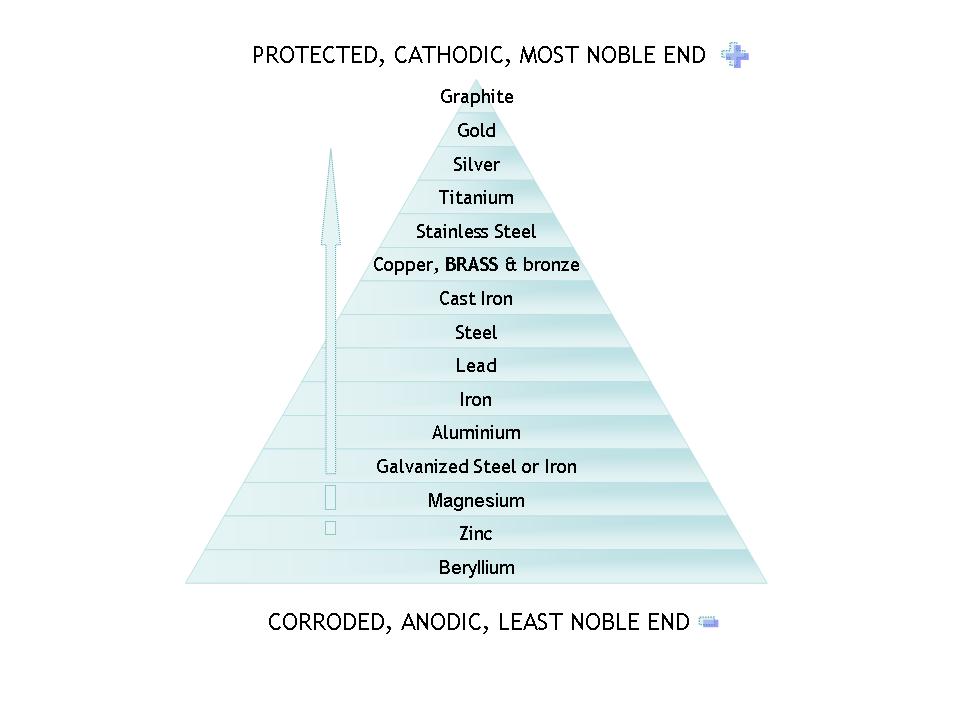Metal compatibility: galvanic corrosion.
Sometimes it may have raised doubts about the use of brass accessories together with other metal pipes, for the possible harmful effects on the installation. An effect that may occur is a corrosion known as galvanic corrosion, which may happen with the contact of two dissimilar metals in the presence of an electrolyte or conductive media, such as water.
But what is the galvanic corrosion exactly? Within a conductive solution, two metals of enough difference of electrical potential are going to generate an electric current: one of them is going to act as anode (-) and the other as cathode (+), generating an ionic migration from the first to the second. The more different metals they are, the more flux of electric charge happens. This effect, of minor importance in sanitary installations where the conductive solution is potable water or from condensation, increases notably in the case of salt water or acid solutions.
Index or galvanic series shows metal nobleness: the more distant they are on the index, the more corrosion it will take place, to happen just to one of the two metals, the less noble one, in a lower position on the following graph:
Metal Galvanic Series

Source: own made
It is important to know that this effect is compensated by the relative area effect: corrosion is negligible if the noble end metal surface in contact is smaller than the surface of the metal susceptible of corrosion. For instance there is no incompatibility by combining brass accessories together with iron or steel pipes, because of their comparatively bigger surface. In the cases where brass is put together with stainless steel, which in this case is acting as the noble metal, brass –acting as corrosive metal- would only suffer this effect if noble metal surface was very much bigger. For example, a brass fitting would suffer if installed on a stainless steel tank. For that occasion it may be advisable to install an rmmcia insulation joint.
For more information, we recommend to read regulations of UNE 112076 IN and UNE EN12502 by AENOR (Spanish Certification and Normalisation Association).
You can be interested in reading: Brass properties.
